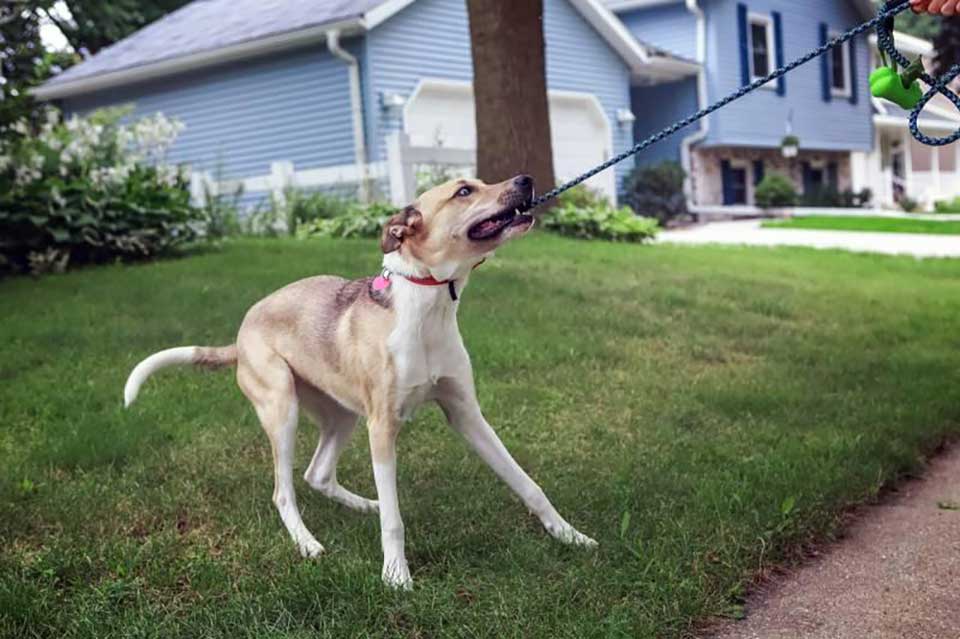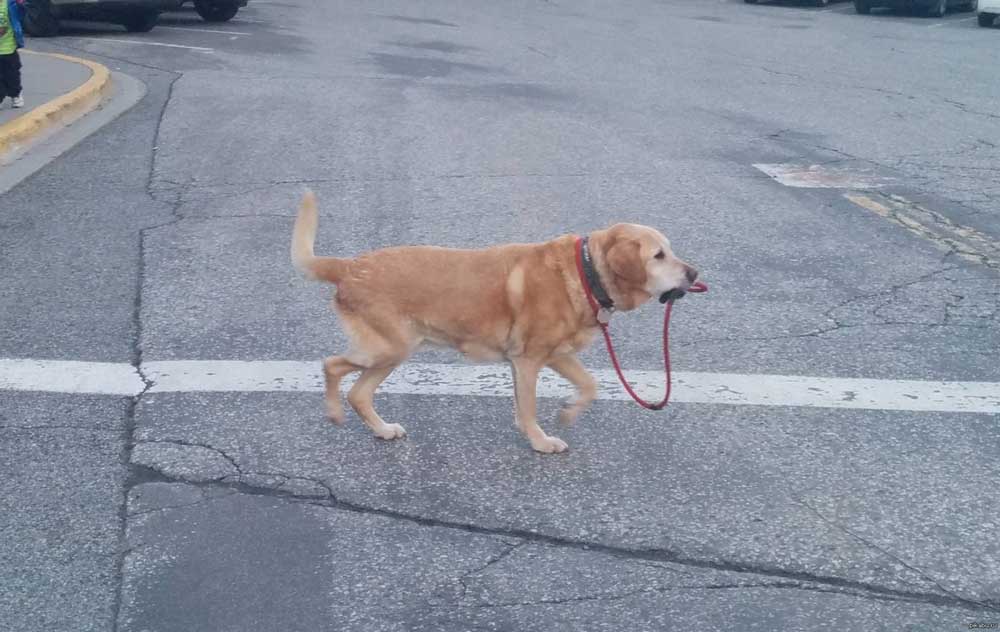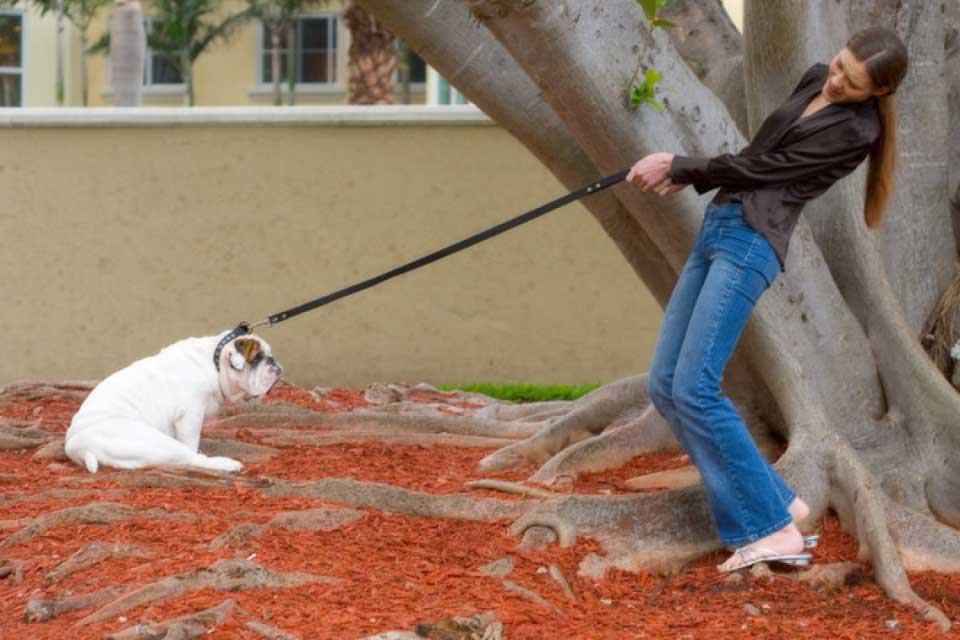Some amateur dog breeders are guided only by their preferences, without considering the need to create acceptable living conditions for their furry companion. It is in such cases that problems arise. The dog starts to shit in the room, gnaws furniture, arranges barking and howling, annoying neighbors, behaves aggressively, does not want to follow commands.
Closed space is not useful to anyone. The inmates in the prison stage protests if they are denied a walk. The same is able to arrange your dog, accessible to his understanding of the means. Restriction of his freedom leads to a stressful state, which affects the character and health of the pet.
When preparing to get a dog, remember: you cannot lock it in four walls. You will have to spend a lot of time with him on the street (which is good for your health too). And if your four-legged friend protests, not wanting to go back to the apartment, only you yourself are to blame. This means that you make mistakes in terms of training, education, but above all, you spend little time with your ward in the fresh air.

Why do most dogs love walking?
The best way to avoid dog misbehavior when you get home is to walk more often and longer. According to average statistics collected by cynologists, more than half of the owners limit their morning exercise to a modest time: 15-30 minutes. Of course, during this period, the dog has time to pee and poop. But it is impossible to satisfy his physical activity with such a short interval.
It’s not just about the mileage that your pet winds up while running down the street. For a dog, a walk is the main source of new information, stimulating the whole organism, organs and systems, to active work. In the wild, during long runs through its territory, the animal received a lot of information through smells, traces, visual landmarks. Domestication did not drown out natural instincts, only made them less pronounced.
A full morning walk is a guarantee of well-mannered behavior and obedience. Therefore, the longer you walk, the easier it is for you to cope with your dog. Ideally, you should walk your dog until he gets tired. The task is difficult, many of us do not have enough time for this. But if you understand that you can’t give your pet an hour or an hour and a half for a morning walk, you shouldn’t get a dog at all.
The evening hours, on the other hand, do not necessarily mean long walks in the snow and rain. Of course, the owner wants to relax after a hard day, he is ready to devote a lot of time to the faithful dog. But the dog will go to bed after the walk. He does not need an excessively long evening promenade, which will disturb his nervous system, ready for sleep.
Daytime is the hardest time for your pet. He remains alone, in an empty apartment, in which he has studied everything for a long time. He has nothing to do. It remains only to lie and miss in anticipation of change. Being a highly socialized creature, the dog experiences discomfort from loneliness, experiences stress and can become depressed. This is one of the reasons why a pet may refuse to return home: he knows that after a while you will leave and leave him alone.
Everyone suffers from boredom and loneliness: people and animals.

How to properly organize your dog
In order for your companion not to be bored during your absence, you need to satisfy his needs for movement and obtaining new information. Learn to get up as early as possible, walk as long as possible. Bring home items, dog toys, that your dog is interested in and that he can be distracted by for a while. This will reduce the stress of loneliness.
To train your dog to listen to you and return more willingly, try not to turn the return into a “catch-up”. The dog may come to the conclusion that by chasing it, you continue the game. Against the backdrop of his desire to take a longer walk, he will begin to arrange similar games for you every day.
A few simple tips to help you avoid trouble when you return home:
- The pet must be kept on a leash until he gets used to obey.
- Call him for a walk more often so that he gets used to it: your call is not a signal of return, but a signal of communication.
- Feed your dog when you return to reinforce the positive emotion.
- Use the services of an experienced instructor to help you with training.
There are dog hotels where you can leave your four-legged friend during your absence. This is an extreme measure, but it can also be used in order not to leave the dog alone.
Common mistakes of owners leading to disobedience

A short walk period is not the only reason why a dog does not want to return home. There are other mistakes that lead to dog disobedience. He stops coming to the call, is afraid to enter the entrance, ignores the orders of the owner. Here are some of them.
No one wants to come up if you call in a formidable voice, in irritation and anger. Annoyance that the pet does not obey makes you angry. Try to follow your intonation, call cheerfully, playfully, calmly. The beast may not understand the words, but the expression with which you address it will recognize it unmistakably.
The dog does not fit, you get angry, and when it finally gives up and is given into your hands, you punish it. This is the worst mistake any pet owner can make. If you want to punish – catch. If they called, called – and finally the dog came up, then you give him a complete amnesty, encourage and praise. In no case do not arrange a pet drag after you have entered the entrance. He will remember this and will do everything to avoid falling into your hands for as long as possible.
Calling the dog, do not run after it. A person should personify for a leader who will never behave like that. On the contrary, start moving away from the dog, attracting its attention. If he is focused on you, you can even hide behind a small obstacle behind which he can quickly find you. Let him be interested in not losing you.
If the dog is very passionate about something, such as playing ball, do not endlessly shout “to me!” Try to let him play and be distracted, only then give the command when you see that he will hear you. The animal will remember the provoked disobedience, so each command must be strictly followed. Don’t command when you’re not sure you’re being heard.
Try to get your team “come to me!” not associated with returning home. Call the animal as often as possible, encourage obedience. Then the dog will not be alarmed by your shout. It will not be associated with a definite end to the walk.
Your communication with the dog should not cause his stress, fear. If you show enough patience, your relationship will develop as it should.

What to do?
Organize the dog’s maintenance in such a way as to satisfy the deficiencies that it experiences. Get up early and walk the dog longer and more actively. Get intelligent dog toys at home.
If you can’t do it yourself, hire a human to come or take the dog to the nearest dog hotel on the way to work, where they can treat the dog to meet all of his canine needs.
Walk your dog on a leash and teach unquestioning obedience. This, of course, will not make the dog happier, but it will remove the problem with resistance.
Follow Pets Feed on Google News!


